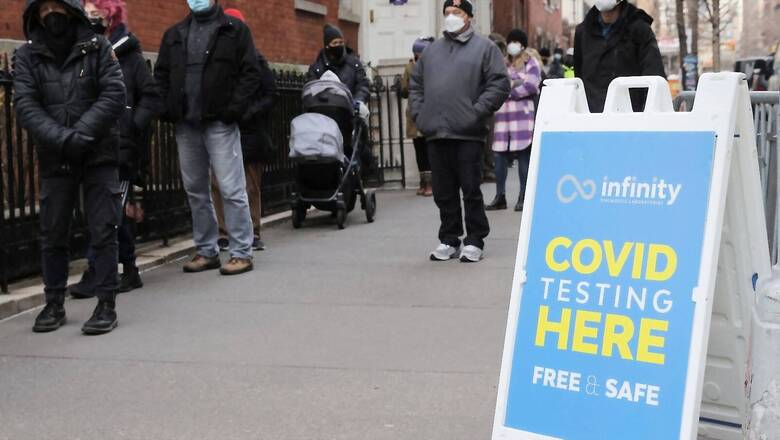
views
Omicron is not the last variant of coronavirus, but Covid-19 will become an endemic disease, researchers have said recently. However, it should not be dubbed “harmless” as yet.
Sebastian Funk, an epidemiologist at the London School of Hygiene & Tropical Medicine, told scientific journal Nature, “I think it’s the expectation that the general behaviour is somehow towards the situation where we have so much immunity in the population that we would no longer see very deadly epidemics.”
On the other hand, top virologist Aris Katzourakis, in an article published in Nature recently, said that it is not correct to treat the coronavirus disease as harmless “just because it will become endemic”.
“A disease reaches an endemic stage when the number of people it is infecting balances out the basic reproduction number – those individuals who an infected person would pass on the infection too,” he said.
Meanwhile, Mark Woolhouse, an infectious-disease epidemiologist at the University of Edinburgh, UK, said that coronavirus will become endemic only when most adults are protected against severe infection “because they have been exposed to the virus as children, and have developed immunity. That will take decades and many adults who were not exposed to the virus as children will remain vulnerable.”
A sub-variant of the highly contagious Omicron coronavirus strain is even more infectious than the original version, according to a study conducted in Denmark. The researchers examined the transmission of Omicron subvariant BA.2 versus BA.1 in 8,541 Danish households and 17,945 household members.
The yet-to-be peer-reviewed finding, posted on the preprint repository MedRxiv, indicates that the rapid spread of BA.2 could be related to an inherent increased transmissibility of the sub-variant. There is also evidence to support immune evasive properties of the BA.2 sub-variant, the researchers said.
“The study found an overall secondary attack rate of 39 per cent in BA.2 infected households compared to 29 per cent in BA.1 infected households,” the researchers from Statens Serum Institut (SSI) said in a statement. “The risk of being infected was higher in unvaccinated persons compared with vaccinated and booster-vaccinated household members in both BA.2 and BA.1 infected households,” they said.
This underlines a positive effect of vaccination towards both Omicron variants, according to the researchers. When comparing BA.2 relative to BA.1 infected households, there was an increased risk of infection in BA.2 infected households regardless of the vaccination status of the potential secondary case, indicating an inherent increased transmissibility of the BA.2 sub-variant, they said.
Read all the Latest News here

















Comments
0 comment